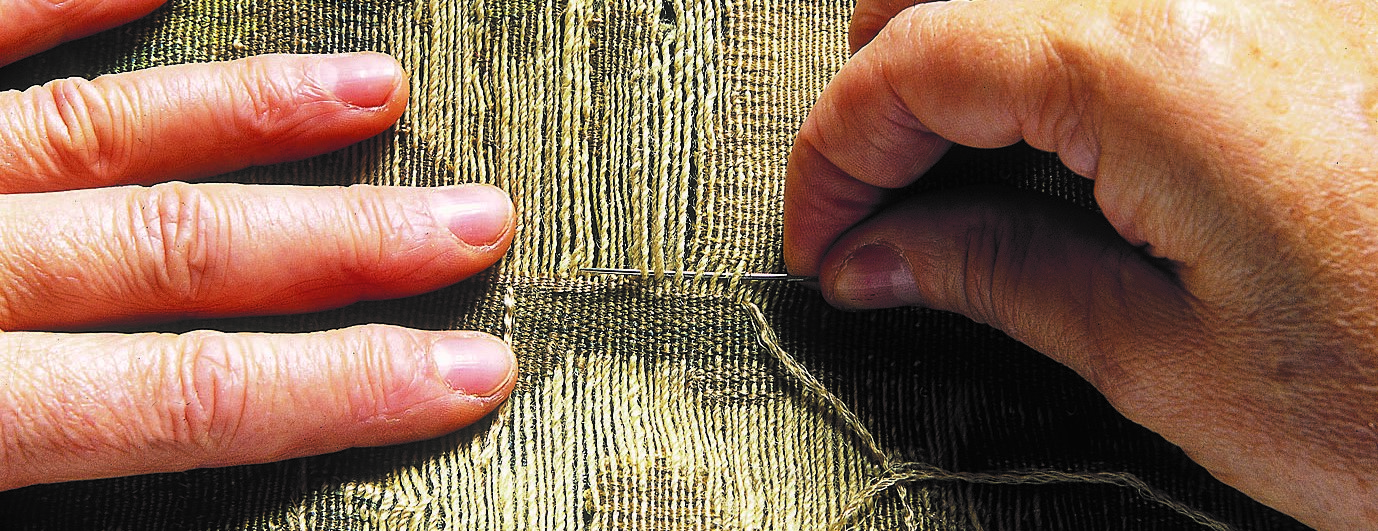TEXTILE FIBRES AND THEIR ORIGINS
Natural textile fibres vary in origin, which may be plant or animal, as well as in durability, softness, absorbency, thermal conductivity, etc. The specific surface structure of individual textile fibres can only be seen under a microscope, where they are observed in longitudinal and transverse directions or cross-sections. The most common natural textile fibres include cotton, linen, silk, and wool.
TEXTILE FIBRES OF PLANT ORIGIN
Linen
Flax fibre is a bast fibre of plant origin. The annual plant (Linum usitatissimum L.) thrives in all areas with a temperate climate, including Slovenia. Several processes are required to obtain linen fibre. First, the flax is harvested, dried, and winnowed. The non-fibrous components of the stalk are then removed by a process called retting, which can be carried out in two ways: biologically, by a series of biochemical reactions involving the action of micro-organisms or enzymes, or chemically, by the addition of chemicals. This is followed by drying the flax straw and by mechanical treatment by means of friction, which breaks the wooden core of the stalk, removes the pieces of wood that have fallen off (the shives), and separates the shorter fibres (the tow) from the longer ones. The combed (heckled) fibres are coarse and hard and are later mechanically, chemically, and biologically processed into finer and shorter fibres in the cottonisation process. The resulting yarn is called cotonin. Linen, the remains of which have been found in prehistoric settlements in Switzerland and in Egyptian tombs, is the second strongest natural organic fibre after ramie (Boehmeria nivea). It absorbs even more water than cotton, which further increases its strength, but its light fastness is inferior to that of cotton. Linen fabrics are good conductors of heat, so they feel cool on the skin.
Cotton
Cotton originates from tropical and subtropical regions and is widespread in America, Africa, especially Egypt, and India. This plant (cellulose) fibre, which is a seed fibre, is obtained from the annual shrub of the cotton plant (Gossypium). After flowering, a three- to four-part fruit is produced in the place of the flower, each part of which contains up to ten seeds. Along with the seeds, the fruit also develops cotton fibres which, when ripe, emerge from the fruit like a piece of cotton wool. The cotton fibres are air-dried and then picked by hand or machine and sorted according to their maturity and the amount of impurities. Remnants of cotton material dating back five thousand years have been found in Indian graves, and it is theorised that cotton was used in Egypt much earlier. The first records of cotton in Europe date back to 1140, when cotton coming from Antioch and Alexandria was weighed on public scales in Genoa. Cotton fibres are relatively strong and inelastic, with longer fibres being finer and more stable than shorter ones. The fibres are hygroscopic, which means that they absorb water very well, and are even stronger when wet.

